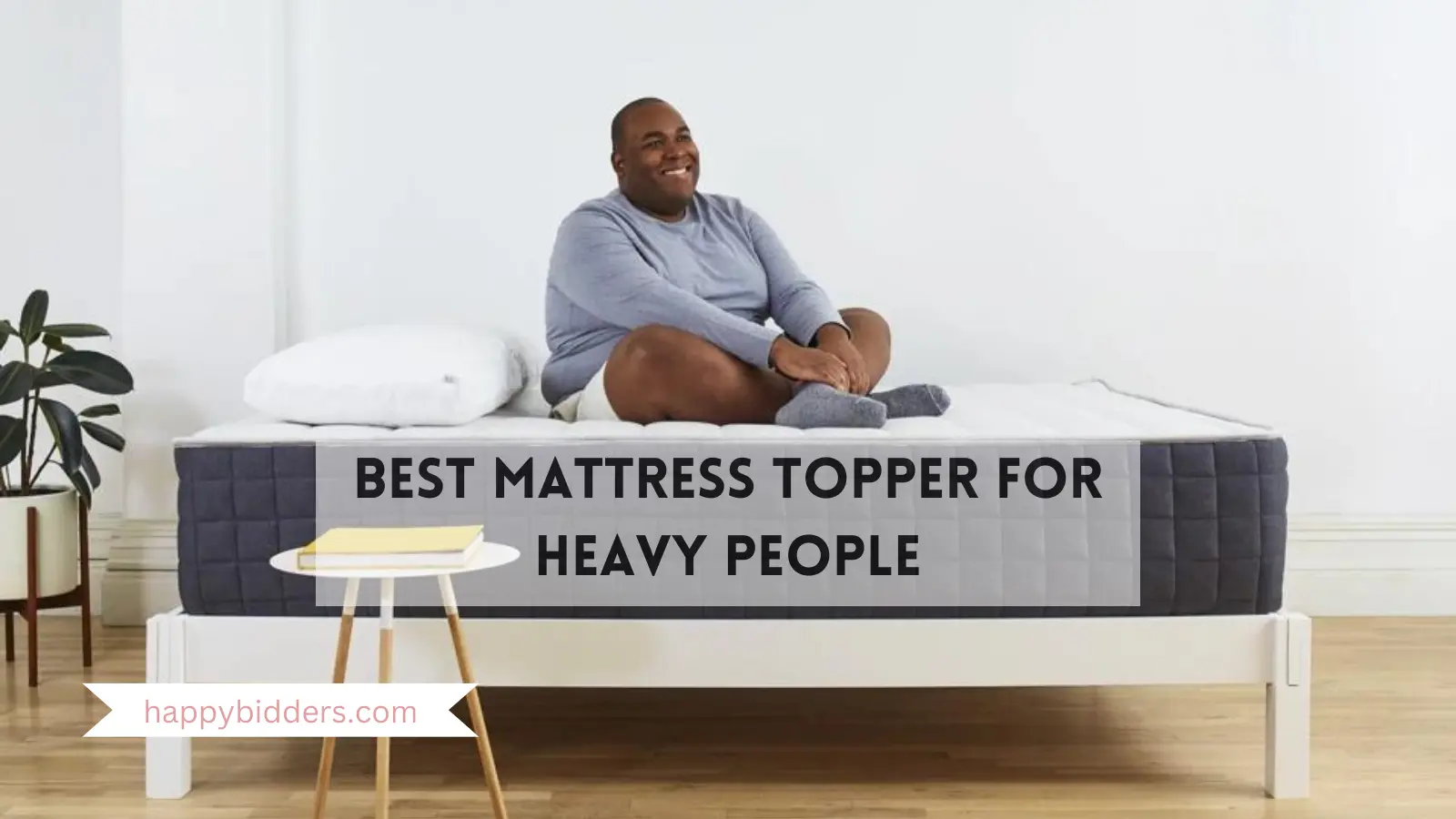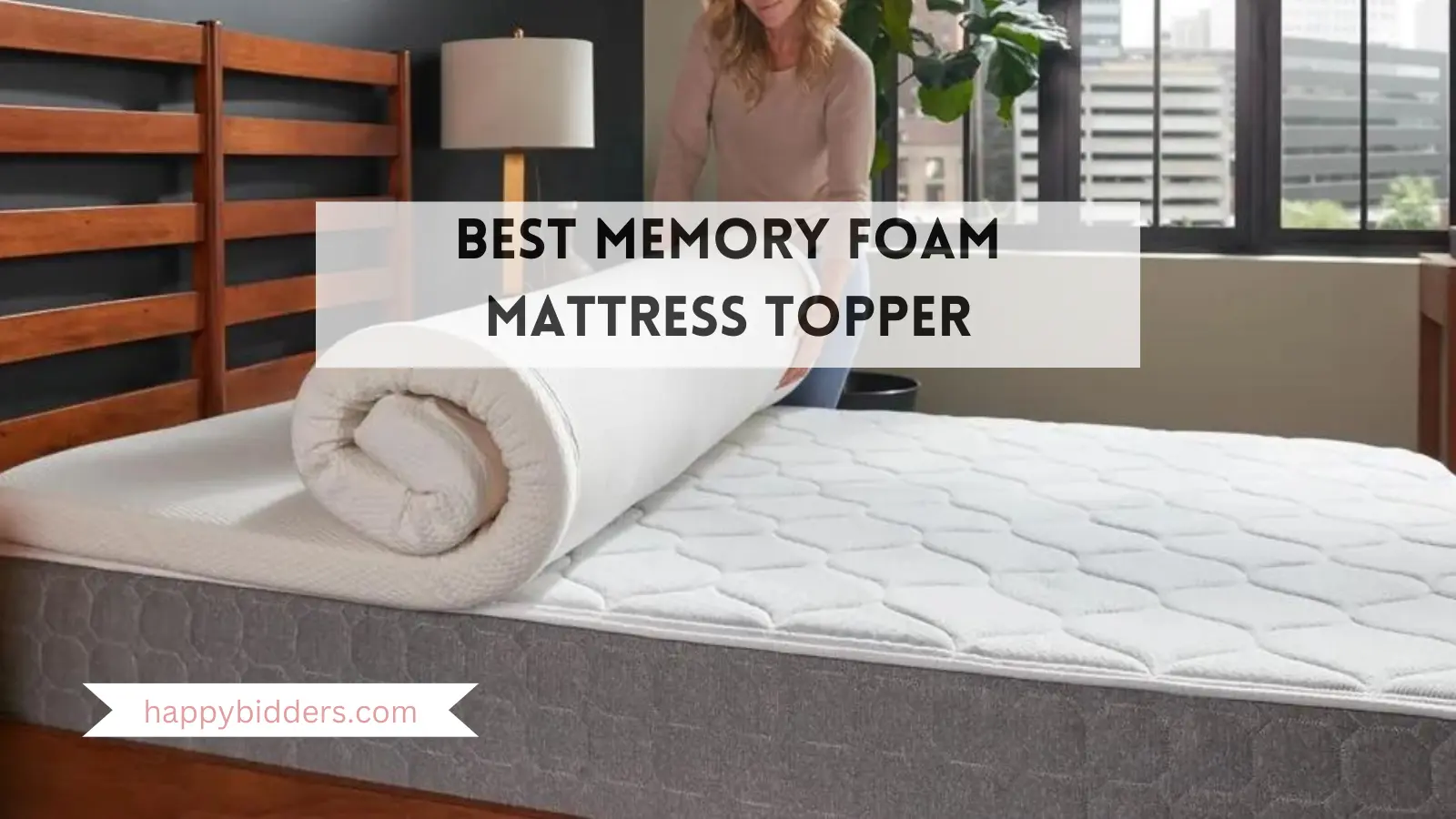chances are, once your child reaches adolescence they’ll have outgrown the bed that accommodated them through early childhood. It may be time to get the Best mattress for your teenager. The right mattress will provide support for proper development and encourage healthy sleep habits. Teenagers are likely to experience growing pains, which cause aching muscles and joints. A supportive and conforming mattress alleviates some of these aches and pains.
Teenagers are going through physical, mental, and emotional changes. They also have schedules and commitments that keep them busy. The CDC recommends that teens get 8 to 10 hours of sleep each night. Restful sleep each night improves their memory and attention span. Since teenagers are also starting to drive, it is important that they are not sleep deprived when they are behind the wheel.
There are multiple factors that keep teens from sleeping well, but their mattress should not be one of them. This guide includes our top picks for the best mattresses for teenagers, a buyer’s guide to help you select the one that is right for your teen, and other factors that affect a teenager’s sleep. We also include helpful tips for improving sleep hygiene and getting quality sleep.
Best Mattresses for Teenagers: Buyer’s Guide
Given all the unique factors a teenager is experiencing, from growing pains to changing sleep patterns, purchasing the right mattress can be complicated. Before buying a mattress, be sure to take the following into consideration. Your teen’s preferences, size, and sleep position will affect which mattress provides the most comfort and support.
What Type of Mattress Is Best for Teenagers?
Teenagers have unique needs that should be taken into consideration before determining which mattress is best for them. Their mattress should be comfortable and supportive. It is also an essential element in creating an environment that is conducive to sleep. The right mattress will help your teenager look forward to bedtime and promote healthy sleep hygiene.
Growing pains cause muscle aches and discomfort. As teens grow, they will need conforming support from their mattresses. This cushions pressure points and reduces growing pains. Proper support also keeps the spine aligned, which is important for growth and development.
Comfort layers of memory foam or latex provide optimal contouring and support in a mattress. These materials are the best for teenagers. A hybrid mattress combines comfort layers of latex or memory foam with innerspring support. This adds durability and airflow to the mattress. Each type of mattress has benefits and drawbacks, which are outlined in the table below.
Memory foam mattresses are made with viscoelastic foam comfort layers and a durable polyfoam base. The viscoelastic memory foam layer typically comprises up to 40 percent of the mattress. This responsive material conforms closely to the shape of your body, alleviating pressure points and promoting spinal alignment. A high-density polyfoam base adds durability and support to the mattress. Memory foam is often infused with materials like copper, gel, or graphite to improve temperature regulation.
Average Price:
The price of a memory foam mattress is determined by the materials used. On average, these mattresses cost between $500 to $1,000. Luxury models cost up to $4,000.
Pros:
- Closely conforming memory foam alleviates aches and pains that teenagers experience as they grow.
- Memory foam promotes proper spinal alignment, which is important for teens as they develop.
- The soft cushioning nature of memory foam is ideal for side and back sleepers.
Cons:
- Memory foam mattresses tend to lack edge support, an important consideration for teens who tend to sit or sleep on the edge of the bed.
- Since memory foam conforms closely, it may restrict airflow around the body and retain heat. This may make it uncomfortable for teens who tend to sleep hot or sweat throughout the night.
Latex mattresses are made with natural or synthetic latex. Natural latex is manufactured with the sap of rubber trees and processed with the Dunlop or Talalay method. Dunlop latex is firm and durable, while Talalay latex tends to be lightweight and breathable. Synthetic latex is made with petroleum. It has a similar feel to natural latex but is generally more affordable. Latex contours gently to the shape of your body for support and pressure point relief. It has a buoyant feel. Latex mattresses are usually made entirely of latex, though some have a polyurethane base.
Average Price:
Latex mattresses tend to be expensive. Natural latex mattresses cost between $1,500 and $2,000 on average, while synthetic latex mattresses cost closer to $1,000.
Pros:
- Natural latex is durable and has a long lifespan. Teens can pass their mattress down to younger siblings after they leave the house.
- Latex is breathable and regulates temperature better than memory foam. This is ideal for teens who tend to sleep hot.
- Latex gently contours for pressure point relief and spinal alignment, supporting proper growth and development.
Cons:
- The high price point of latex mattresses may not appeal to families who are shopping on a budget, especially since the teen will only use the mattress for a few years.
- Latex is heavy, which makes the mattress difficult to move or adjust.
Innerspring mattresses are common and affordable. This popular mattress choice is made with steel coil support and comfort layers of fiber or foam. The coils design varies between mattresses. Individually wrapped coils improve the responsiveness and motion isolation of the mattress.
Average Price:
Innerspring mattresses are an affordable option, with an average price of $500 to $1,000. Coil construction and materials used in the comfort layers affect the price.
Pros for Teenagers:
- Innerspring coils add airflow to the mattress, providing temperature regulation for teens who tend to sleep hot.
- Coils can be supportive and responsive for spinal alignment.
- The affordability of innerspring mattresses appeals to families who do not want to invest in an expensive mattress that will only be used for a few years.
Cons for Teenagers:
- Innerspring mattresses tend to transfer movement across the bed and make noise when bearing weight. This may cause sleep disturbances for teens.
- Innerspring coils do not conform closely, so these mattresses may not provide adequate pressure point relief for teens.
Hybrid mattresses have a support base of innerspring coils and thick comfort layers of memory foam or latex. Many hybrid mattresses incorporate a dual spring construction with a micro coil layer for more responsiveness. The thick foam layers provide contouring support and pressure point relief, while the innerspring layer adds airflow and improves temperature regulation.
Average Price:
Hybrid mattresses tend to cost between $1,000 and $1,500. Luxury models cost $2,000 or more..
Pros for Teenagers:
- Conforming comfort layers relieve pressure points and aches and pains.
- The combined layers provide full body support for growing teens.
- Improved temperature regulation and airflow is ideal for teens who sleep hot.
Cons for Teenagers:
- The expensive price point is not ideal for families shopping on a budget.
- With coil layers, hybrid mattresses may transfer motion or make some noise when bearing weight.
Important Mattress Features for Teenagers
Buying a new mattress can be a difficult decision with unique factors for teenagers to consider. Adolescence is filled with change, and teenagers are experiencing growth spurts, changing sleep cycles, and busy schedules. Everyone is unique, so each teenager will have different needs when it comes to their mattress. Comfort is subjective and how the mattress feels will depend on your teen’s sleeping position, body type, weight, and personal preferences. Additional qualities like temperature regulation and motion isolation will be important to some. Before purchasing a new mattress, the following factors should be considered.
- Size: By the time they reach adolescence, most teens will have outgrown their childhood bed. While a Twin or Full mattress may work for petite or short teenagers, these mattresses may feel too narrow or short for most. A Queen-size mattress is usually more comfortable. This gives your teenager enough room to spread out. If your teen is especially tall or heavy, a King mattress may be more suitable. Consider your teen’s height and weight before choosing a mattress size. They will need enough room to comfortably lay down and change positions throughout the night.
- Support: Support measures how well the mattress keeps your teen’s spine aligned. This is especially important for growth and development. Responsive materials evenly support your teen’s body and promote spinal alignment. The support base of the mattress should be durable.
- Contouring: A mattress that conforms closely to your teen’s body relieves pressure points and helps keep the spine aligned. Contouring comfort layers relieve aches and pains for growing teens. Memory foam conforms closely, which often restricts airflow around the body and causes heat retention. This results in the feeling of sleeping hot. Latex gently contours for pressure point relief.
- Firmness: The best mattress firmness for a teenager depends on their weight, sleeping position, and personal preferences. Mattresses are rated from soft to firm, typically on a scale of 1 to 10. Lightweight and side sleepers tend to prefer softer mattresses, as this provides additional cushioning. Average weight and back sleepers gravitate towards medium to medium firm mattresses, which balance comfort and support. Heavier teens or those who sleep on their stomachs may need a firm mattress.
- Motion Isolation: Motion isolation tends to be less of a concern for teenagers since they are not likely to share the bed. But for those who tend to toss and turn throughout the night, motion isolation and noise reduction can promote restful, undisturbed sleep.
- Temperature Regulation: Puberty affects sweat glands, so teens may notice they are sweating throughout the night. As a result, teenagers benefit from a mattress made with breathable, comfortable materials. Materials like open-cell foam, latex, and innerspring coils add airflow to a mattress. There are also cooling materials for teens who sleep hot. Foam infused with gel, graphite, or copper draws heat away from the body, while fibers like cotton and Tencel wick away moisture.
- Edge Support: Edge support prevents sagging over time around the perimeter of the bed. For teens who tend to sit or sleep on the edge of the bed, a mattress with a reinforced perimeter may be a good idea. This is most common in innerspring and hybrid mattresses. Memory foam mattresses tend to lack edge support, though a dense polyfoam base will provide consistent support from edge to edge.
- Price: Some parents may be hesitant to purchase an expensive mattress if their teenager is only going to use it for a few years. Some teens want to take their mattress with them when they move out, while others may pass it down to their younger siblings. A high-quality mattress that will last is a good investment.
What Affects a Teenager’s Sleep?
There are multiple reasons teenagers may not be getting enough sleep. Their schedules are usually packed with school, extracurriculars, part-time jobs, and social activities. Balancing all of these things is overwhelming, and sleep is usually sacrificed as a result. Teens are also going through physical, mental, and emotional changes that affect their sleep. Every teen is different, but the following factors can have an impact on sleep quality.
- Physiological Changes: Growing pains cause aching joints and muscles and are more likely to occur in the evenings. These aches and pains can make it difficult to fall asleep, or they may cause your teen to wake up throughout the night. Active teens may have sore muscles from sports. A mattress with contouring comfort layers provides pressure point relief and reduces pain. During puberty, apocrine sweat glands start to function. Teens may find they sweat or overheat throughout the night, so it is important to have a mattress and bedding that keeps them comfortable. Keep in mind they are going through mental and emotional changes as well.
- Shift in Circadian Rhythms: Teenagers experience a shift in their circadian rhythms, with melatonin being produced later in the day than when they were children. This makes it harder for teens to fall asleep earlier. A bedtime of 10 or 11 p.m. may feel more natural for teenagers, though school tends to start early. This makes it difficult for teens to get the recommended 8 to 10 hours of sleep each night. Those with a severe shift in their sleep-wake cycles may suffer from delayed sleep phase syndrome. This syndrome causes a shift in sleep-wake cycles of two hours or more. As a result, teens are not able to fall asleep at a conventional bedtime and may find it harder to wake up in time for school. They also tend to feel tired throughout the day and want to catch up on sleep on the weekends. Establishing a routine and sticking to it can help them adjust, though there are other treatment options.
- School/Busy Schedules: To accommodate the shift in circadian rhythms and ensure teens are getting enough sleep, the AAP recommends that middle and high schools start at 8:30 a.m. or later. Unfortunately, the majority of schools still start earlier than 8:30 a.m. When you add in extracurriculars, homework, and studying, teens are getting up early and going to bed late. Pay attention to how much your teen has on their plate. Coming up with a schedule and routine helps them balance everything while still getting enough sleep.
- Sleep Hygiene: Sleep hygiene refers to bedtime routines and habits. Good sleep hygiene promotes restful sleep. Creating a bedroom environment that is conducive to sleep can help. Your teenager’s bedroom should be dark, set at a comfortable temperature, and quiet. Set habits that help your teen wind down each night and eliminate distractions in the bedroom like electronics. Your teen should associate their bedroom with sleep, so it might be helpful to make a separate space for homework and studying.
Additional Sleep Tips for Teenagers
Teens have unique needs when it comes to their schedules and habits. While the right mattress can improve sleep quality, there are additional measures to take to ensure your teen gets enough rest each night. The following tips may help them get better sleep.
- Limit caffeine intake: Caffeine is a stimulant. Studies have shown that adolescents with high caffeine intake tend to feel more tired in the morning. Limiting caffeine intake improves overall sleep quality and reduces fatigue throughout the day. Common caffeinated beverages include coffee, tea, energy drinks, and sodas.
- Establish a regular schedule for sleep: Going to bed and waking up at the same time each day helps your body develop a natural sleep-wake cycle. Setting a consistent schedule will help your teens feel ready for bed every night, and should make it easier for them to wake up in the morning. Take into consideration what time your teenager needs to wake up for school and set a bedtime that gives them 8 to 10 hours of sleep. Though it will be tempting for teens to sleep in on the weekends, letting them sleep in too late will disrupt their sleep pattern for the week.
- Get regular exercise: Regular exercise has been shown to help people fall asleep faster and get better sleep. Aerobic exercise also encourages deep sleep. Exercising too close to bedtime may be stimulating for your teen, so it is best to incorporate exercise into their morning or afternoon routines.
- Organize your bedroom for sleep: Fewer distractions in your teen’s bedroom will help them sleep better. Keep the television and other electronics out of the bedroom. Create a separate space for homework and studying, and reserve the bed for sleeping. Investing in a comfortable mattress and bedding will help your teen look forward to sleep each night. Blackout curtains also keep the bedroom dark, which will help facilitate sleep.
- Reduce anxiety: High school is a stressful time for teens, and they may feel anxious about classes, college applications, and their social lives. Encourage habits like meditation and check in with your teen to see how they are managing their anxiety. For teens who need help finding healthy ways to reduce their anxiety, it may be beneficial to consult with a medical professional.
- Find ways to de-stress: In addition to meditation, calming routines help teens de-stress at the end of the day. They can unwind with a warm bath or non-school-assigned reading. Exercise may also help them de-stress. Work with your teen to ensure they are managing their stress and setting aside time for self-care.
- Manage screen time: The blue light emitted from electronics limits melatonin production and disrupts sleep-wake cycles. Limit screen time for your teen, especially before bed. Ideally, screens should be shut off at least one hour before bed. To encourage this, parents may want to set up a charging station outside the bedroom where the electronics can be stored at night.







